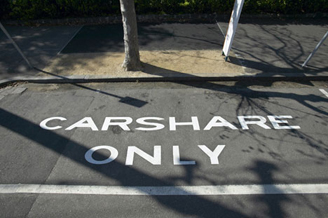
Here are a few ways to encourage lift sharing amongst your employees:
A typical incentive is to provide priority car parking spaces for lift sharers. Apart from disabled spaces, these should be located as close as possible to building entrances and exits. There should be a sufficient number of spaces so that lift share drivers needn't drive around looking for a space. Organisations might want to put up signs to show the car share parking area and paint "2+" in the relevant spaces.
A car travelling 20 miles with 3 occupants could save £1,000 a year per person.
Find people in your organisation who already lift share and see if they'd be willing to be used as examples. If they don’t already know it, work out how much they are probably saving in a year. Don’t forget the savings they'll be making in terms of vehicle depreciation and servicing costs.
The organisation itself can offer financial incentives to lift share. For example, employees could be given a target to achieve a certain number of ‘sustainable trips’ in a month or a year etc and be given a cash bonus on reaching that target. Offering cash incentives might have tax implications both for the organisation and the individuals concerned, however a scheme could still be beneficial. The HMRC should be consulted before a cash incentive scheme is implemented to ensure that tax rules and regualtions are adhered to.
Another form of financial incentive is to offer vouchers or discounts on certain products or brands. The Travel Plan Coordinator's organisation might be in a position to offer discounts (or further discounts) on its own products and services or it might be able to organise discounts on specific products such as cheaper car insurance, car parking charges or motoring organisation discounts.
Some organisations arrange for car sharing vehicles to be valeted or even serviced on a regular basis. Lift sharers build up credits towards these types of initiative by getting a ‘loyalty card’ stamped whenever they share.
Some lift sharing schemes also offer more ‘gimmicky’ products whose primary aim might be marketing a scheme that is a fun and sociable such as branded car stickers, squeezy ‘stressballs’, ‘fluffy dice’ etc...
The fear of being stranded at work (or having to leave someone stranded at work) can be a concern especially as some people will need to be back at certain times due to childcare constraints. The Travel Plan Coordinator should ensure that the organisation has a clearly defined system to deal with emergency rides. This could be in the form of free, back-up taxi travel or from employees who are willing to be put on an emergency transport list.
Lift sharing spaces might need some form of 'policing' so they aren't abused. Priority lift share parking spaces must not be used by non-lift sharers, but how can this be enforced?
Partly it depends on whether or not your organisation controls the car park. If you share the car park with others then you'll probably need to get joint agreement over the use of spaces. If the spaces are controlled by a landlord or their agent then designated car share spaces could be more tricky.
There are different types of enforcement.